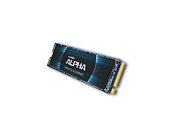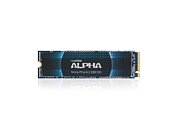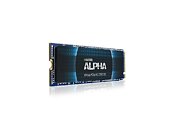Mushkin Enhanced MFG - An industry-leading designer and manufacturer of high-performance and high-reliability computer products, today unveiled its new ALPHA series of high-performance solid-state drives (SSDs) featuring an industry-leading capacity of up to eight terabytes (8 TB) the new SSD delivers an uncompromising mix of speed, storage capacity and reliability for mainstream and professional PC users.
The ALPHA Series, powered by Phison's 12 series controller, balances performance, capacity, cost, and energy efficiency, making it the ideal solution for cloud computing, big data, external storage systems, digital imaging and media, technical applications and cold storage. At 4 TB and 8 TB capacities, the ALPHA Series SSD line are the highest capacity in Mushkin's solid state drives line up shipping today.



ALPHA Specifications and Dimensions:
Pricing & Availability:
The Mushkin Alpha 4TB and Mushkin Alpha 8TB are now available for purchase on Amazon at 649.99 and 1,299.99 USD respectively.
View at TechPowerUp Main Site
The ALPHA Series, powered by Phison's 12 series controller, balances performance, capacity, cost, and energy efficiency, making it the ideal solution for cloud computing, big data, external storage systems, digital imaging and media, technical applications and cold storage. At 4 TB and 8 TB capacities, the ALPHA Series SSD line are the highest capacity in Mushkin's solid state drives line up shipping today.



ALPHA Specifications and Dimensions:
- Capacities: 4 TB and 8 TB
- Max Sequential: 3300 MB/s (Read) / 3000 MB/s (Write)
- 4 KB Random: 550,000 IOPS (Read) / 680,000 IOPS (Write)
- Operating Temperature: 0°C to 70°C
- Storage Temperature: -40°C to 85°C
- Dimensions: 22 mm x 80 mm X 2.25 mm
- Warranty: 3 Year Limited Warranty
Pricing & Availability:
The Mushkin Alpha 4TB and Mushkin Alpha 8TB are now available for purchase on Amazon at 649.99 and 1,299.99 USD respectively.
View at TechPowerUp Main Site


